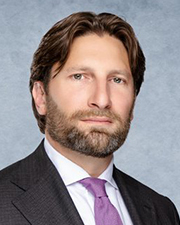
The state of medical office properties in New England - by Harrison Klein

Medical office is in the news right now. Steward Health Care, which owns nine hospitals in New England, is in bankruptcy. Lifespan and Care New England in Rhode Island lost over $100 million in 2022. Prospect Medical in Connecticut owes the state $67 million. It appears that the privatization of hospitals was an ill-conceived idea. Personally, I’m working with several landlords who are not receiving rent because of the Steward failure. Compass Medical, which closed abruptly in 2023, left entire buildings vacant. More importantly, they left patients stranded with only vague explanations for canceled appointments. Despite all of this, Massachusetts remains a top medical market with world-class hospitals and a leading medical safety net in MassHealth. I felt blessed when my son needed a major medical procedure; we were a T stop away from a top cardiac surgeon at Children’s Hospital.
The story of the past decade in the medical space has been one of consolidation. Hospital networks have merged. Beth Israel and Lahey, Mass General and Brigham, among others. My focus is on smaller suburban office buildings, often home to the primary care doctor that you’ve been visiting for decades. These buildings and the investors that own them have been heavily impacted by the sales of privately owned practices.
In the 20th century, most doctors owned their practices, often with anywhere from one to 50 other doctors in a partnership. It was uncommon for medical services to be owned by non-doctors. Upon retirement, doctors would enter a retirement buyout protocol, typically being bought out over the following five to 10 years. This is a similar arrangement to what you might see in a law firm or accounting practice. Younger doctors could work for a practice with the expectation that eventually they may have the opportunity to own part of that practice. With increasingly complex billing, massive student loans for new doctors, and other challenges, this system broke down. Thousands of individual practices were bought by hospital networks over the past 20 years. Today, larger independent practices are an exception, not the rule.
These buyouts mean that landlords are more frequently negotiating with large hospitals instead of individual doctors for lease renewals. Landlords benefit from the improved credit profile of the hospital. The hospital-owned practices are willing to pay higher rent for premium space. This also means older buildings are being vacated by more selective tenants.
Telehealth has not significantly impacted medical office buildings, contrary to popular opinion. Insurance rules still require most patients to come into the office. While COVID-19 has changed many aspects of the built environment, medical offices remain largely unaffected. Professional office buildings are suffering from vacancy issues, unlike medical offices. In fact, we have looked to identify professional buildings with characteristics that make them candidates for a medical conversion. These include at least four parking spaces per 1,000 s/f of building area, mechanical systems including appropriate elevators, general curb appeal, and proximity to either hospitals or other medical providers is also a major advantage. When feasible, converting to medical offices can increase rent, reduce vacancy, and enhance a building’s valuation through cap rate compression.
Like all other product types, high interest rates are impacting the medical office field. Cap rates have risen 100-150 basis points since bottoming in early 2022. A building once valued at a 5.5 cap, now valued at a 6.75 cap, has effectively lost 18.5% of its value. Owners with attractive, long-term debt are broadly deciding not to sell. Development projects today require tenants to commit to long-term leases with rents in the $40 per s/f triple-net range.
Medical offices remain a favored asset class, especially modern buildings in prime locations, which attract a broad pool of buyers. These buyers target high-quality, well-located buildings with durable cash flow. High renovation costs are impacting new leasing activities. Like industrial and multifamily, medical offices are thriving in the work-from-home era. High barriers to entry indicate strong demand for existing buildings for years to come.
I am bullish on medical office properties in New England. Long leases from strong tenants can deliver stable yields for investors. Government funding, including MassHealth, ensures that medical care is affordable for the masses. With the right property, a medical office building can be a terrific investment.
Harrison Klein is first vice president of investments at Marcus & Millichap, Boston, Mass.